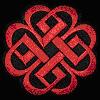how to find the root directory of a hard drive
#1

Posted 07 April 2009 - 11:36 AM
Register to Remove
#2

Posted 07 April 2009 - 03:55 PM
http://www.google.co...amp;btnG=Search
But in short, the root directory is your C:Drive, it is the directory that is not inside of another one, the highest up on the chain of directories. Notice how whenever you look at the path of a file on your computer it starts with C: (on some computers it may be D:, or some rare others), this is the root directory as there is none before it.
Regardless, if you are trying to back up your My Documents folder, just do this:
1) Navigate to My Computer > C: > Documents and Settings > YOURUSERNAME
2) Right click on the My Documents folder and choose copy
3) Open up the drive that you wish to copy it to (if it's an external hard drive or USB device, go to My Computer and it will be in the list of drives as whatever you named it too.)
4) Click in an empty space and choose "Paste"
If you are trying to get My Documents to another computer then you will have to first put it on an external drive of some sort, unless you have it connected via a network.
So then on the computer your copying too
5) Plug the external drive into the computer you want to copy it too
7) Open a window and navigate to the My Documents folder on your external drive, right click it, and choose copy
8) Go to My Computer > C: > Documents and Settings > USERNAMETOCOPYTO and copy it over the My Documents already there. If you have anything in it already you should back it up elsewhere first.
Edited by Vectris, 07 April 2009 - 04:00 PM.
"Life's like a game of Poker, sometimes you win, sometimes you lose" - Garfield
#3

Posted 03 July 2011 - 12:13 AM
Edited by Doug, 03 July 2011 - 08:58 AM.
removed active link
#4

Posted 03 July 2011 - 12:31 AM
I have been reading an article about how to move the 'my documents' folder from the c: drive to another drive. The article says to navigate to the root directory of the drive you want to move the folder to. Unfortunately, it doesn't tell you how to do that. My question is: how do you find the root directory of a hard drive? For example, if I wanted to move 'my documents' folder to another drive altogether (not a partition on c:), how do I find the root directory of the other drive?
Thanks for reading and in advance for any help offered.
hedley
You do not need a program to do this, it is simplicity itself.
See my post #16 here.
Hi hedley93,
If you do decide to create a Data partition, this is how you would redirect My Documents - Start / right click My Documents / properties / move / select already created My Documents folder in the Data partition, or click on "create folder" button and create and name the folder / click OK and your done. Your OS will now start transferring everything in your C:\My Documents to D:\My Documents (can be named anything you like actually).
The above is for XP but it is essentially the same In W7. You can also auto re-direct any other folder under your user name you wish to re-direct.
Cheers,
Lee
Edited by Lee, 03 July 2011 - 12:36 AM.
The free advice, opinions and sentiments expressed here are mine only, so you can safely assume I have no software or OS company patrons or any other benefactors when I post in this forum.
#5

Posted 03 July 2011 - 11:44 AM
` ` ` ` ` ` ` ` `
J. C. Griffith
#6

Posted 12 July 2011 - 05:06 AM
0 user(s) are reading this topic
0 members, 0 guests, 0 anonymous users








